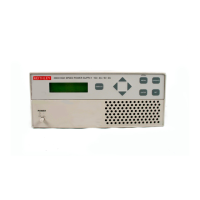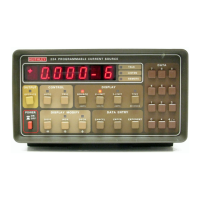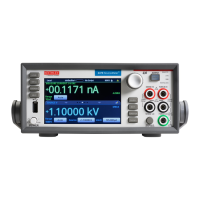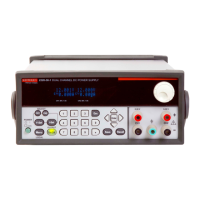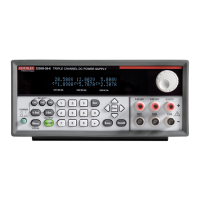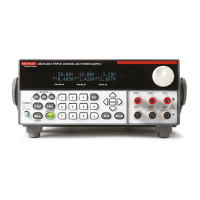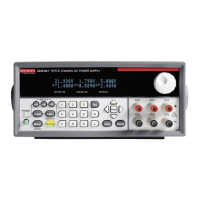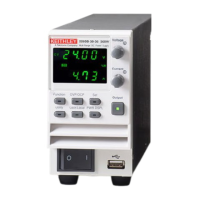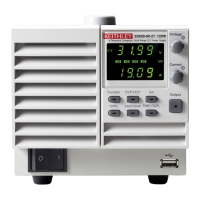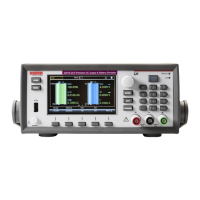C-8 Calibration Reference
Detecting calibration step completion
When sending remote calibration commands, you must wait until the instrument completes
the current operation before sending another command. You can use either *OPC or *OPC? to
determine when each calibration step is completed.
Using the *OPC command
Using *OPC is the preferred method to detect the end of each calibration step. To use *OPC,
do the following:
5. Enable operation complete by sending *ESE 1. This command sets the OPC (operation
complete
bit) in the standard event enable register, allowing operation complete status
from the standard event status register to set the ESB (event summary bit) in the status
byte when operation complete is detected.
6. Send the *OPC command immediately following each calibration command. For
example:
:CAL:PROT:STEP0 14;*OPC
Note that you must include the semicolon (;) to separate the two commands, and that
the *OPC command
must appear on the same line as the command.
7. After sending a calibration command, repeatedly test the ESB (Event Summary) bit (bit
5)
in the status byte until it is set. (Use *STB? to request the status byte.)
8. Once operation complete has been detected, clear OPC status using one of two methods:
(1) use the
*ESR? query, then read the response to clear the standard event status register,
or (2) send the *CLS command to clear the status registers. Note that sending *CLS will
also clear the error queue and operation complete status.
Using the *OPC? query
With the *OPC? (operation complete) query, the instrument will place an ASCII 1 in the
output queue when it has completed each step. To determine when the OPC response is ready,
do the following:
1. Send the *OPC? query immediately following each calibration command. For
example:
:CAL:PROT:STEP0 14;*OPC?
2. Wait for an ASCII 1 to be read from the unit after addressing it to talk.
Generating an SRQ on calibration complete
An IEEE-488 bus SRQ (service request) can be used to detect operation complete instead of
repeatedly polling the Model 2306. To use this method, send both *ESE 1 and *SRE 32 to the
instrument, then include the *OPC command at the end of each calibration command line, as
covered above. Clear the SRQ by querying the ESR (using the *ESR? query) to clear OPC
status, then request the status byte with the *STB? query to clear the SRQ.
Refer to your controller's documentation for information on detecting and servicing SRQs.
Test Equipment Depot - 800.517.8431 - 99 Washington Street Melrose, MA 02176
TestEquipmentDepot.com
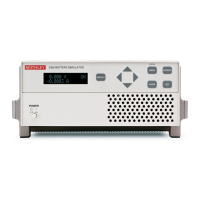
